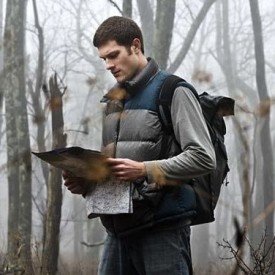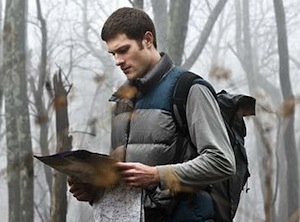
Written by Dr. Michelle Mazur

Have you ever been hiking and the trail suddenly disappears? All of the sudden, you don’t know where you are going. You are lost! You have to struggle to find the trail to push forward or you have to turn back.
Have you ever sat through a presentation where you are utterly lost? You have no idea where the speaker is going. No idea where he has been and you are struggling to make sense of it all.
Like hiking, when speaking the last thing you want is to get lost. Luckily by following some good hiking advice, your speech can keep the audience engaged and on the same happy trail as you.
Be prepared
Before venturing out on a hiking outing, you need to be prepared – food, water, proper clothes, and good boots. Before giving a presentation, you need to take the time to thoroughly prepare and rehearse your speech. Do your research. Craft a speech and then practice the speech. Not sure how to approach practicing a speech – check out 8 Steps to Practicing a Presentation for practical practice tips.
Decide how to pack your speech backpack
You’ve prepped for your hike – now you have to decide how to pack your backpack. For speakers, this means deciding on the structure of your speech. Deciding on what structure to use depends on your topic. For example, recounting a historical event – it’s best to use chronological order. Exploring two opposing viewpoints try a compare and contrast approach.
Always bring a map
Just a like hiker needs to know where they are going; your audience wants to know where they are following you. Provide them with a road map. Be sure in the introduction to preview your main points.
Watch the transition to new terrain
When I hike, I spend a lot of time looking at my feet. I’m always watching out for where the terrain might change. If only there were signposts that let me know when my smooth trail turns rocky. In presenting, there should always be signposts throughout the speech. When you transition from one point to the next, tell your audience. It can be something as simple as “My second point is” or you can summarize your previous point before introducing the next. Whatever your approach, you should take great care in how you transition to new terrain.
End strong
A few years ago after a long hike, I was off the trail, walking back to the car, fell, down and hurt myself. Why? Because I wasn’t paying attention to the end of the hike! I didn’t end strong. Speakers often make the mistake of just saying “thank you” or “that’s all I’ve got” before scurrying back to their seats. End your presentation strong. Summarize your main points. Leave your audience with a statement that you want them to remember!
By being prepared, packing your speech backpack, having a map, watching your transitions and ending strong, you won’t lose your audience! More importantly, you won’t lose yourself out on the hiking trail.
Do you have any tips on not losing your audience when you speak? Share ideas below. I’d love to hear them.
I love comparisons such as this! Really a great way to tie two concepts together!